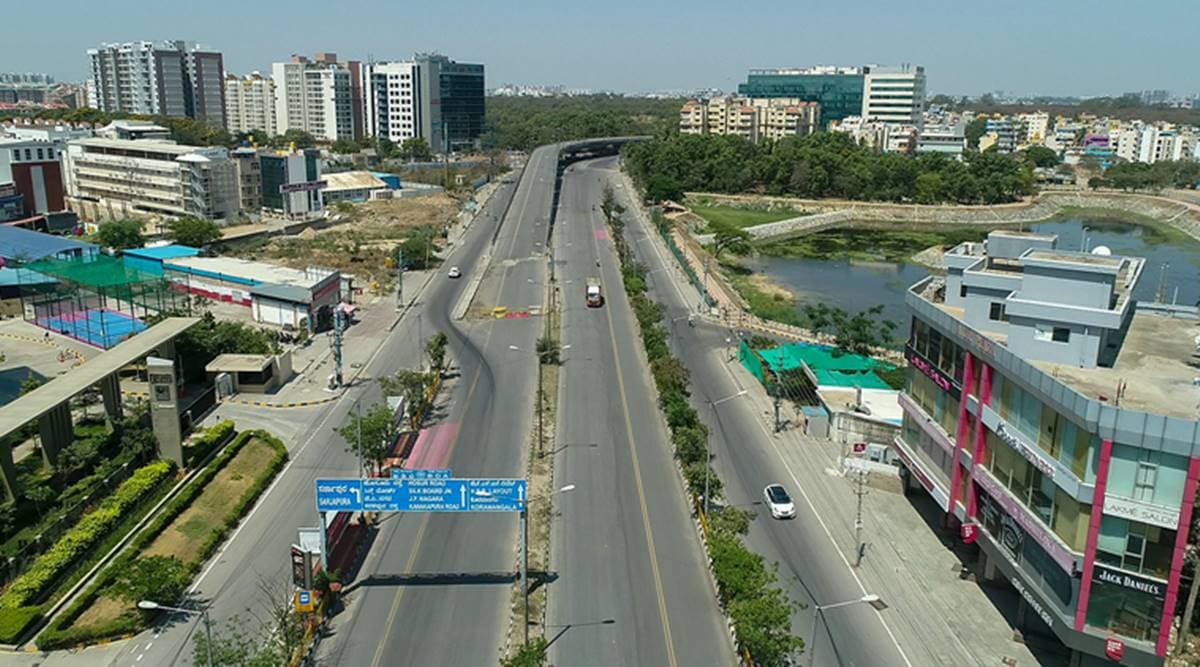 Of the 49 cities ranked on livability index in the million-plus population category, Delhi ranks 13th. At the bottom of the list are Amritsar, Guwahati, Bareilly, Dhanbad and Srinagar. (File)
Of the 49 cities ranked on livability index in the million-plus population category, Delhi ranks 13th. At the bottom of the list are Amritsar, Guwahati, Bareilly, Dhanbad and Srinagar. (File) BENGALURU HAS been adjudged the most liveable city in India, followed by Pune, Ahmedabad, Chennai and Surat, according to the government’s Ease of Living Index released on Thursday.
Of the 49 cities ranked on livability index in the million-plus population category, Delhi ranks 13th. At the bottom of the list are Amritsar, Guwahati, Bareilly, Dhanbad and Srinagar.
According to the index, released by Union Housing and Urban Affairs Minister Hardeep Singh Puri, Shimla topped the category of cities with population of less than million. It is followed by Bhubaneswar, Silvassa, Kakinada and Salem. At the bottom of the list of 62 cities are Aligarh, Rampur, Namchi, Satna and Muzaffarpur.
The Ease of Living Index, according to the government, is an assessment tool that evaluates the quality of life and impact of various initiatives for urban development. More than 32 lakh people across 111 cities participated in a ‘Citizen Perception Survey’, holding a weightage of 30 per cent.
No city from the north with over a million people figured in the top 10 of the Municipal Performance Index, involving 51 municipal corporations. Indore topped the index, followed by Surat, Bhopal, Pimpri Chinchwad and Pune. The last five were Aurangabad, North Delhi, Srinagar, Kota and Guwahati.
New Delhi, however, topped the list of cities with less than a million people in the Municipal Performance Index, followed by Tirupati, Gandhinagar, Karnal and Salem. At the bottom were Itanagar, Pasighat, Kohima, Imphal and Shillong.
With financial autonomy of municipalities “far from being achieved”, the report suggested amending the Constitution to further fiscal decentralisation.
While the 74th Constitutional Amendment Act – instituted almost three decades ago to allow decentralised urban governance – has enough provisions to address the problems facing cities today, the report said implementation of the Act has been compromised.
Only 20 cities out of the 111 cities surveyed have the power to borrow and invest funds without state approval, “a serious blow to the goal of the 74th Constitutional Amendment Act”, the report said.
It suggested creating a five-year mayoral term across India, and consolidating planning, development, housing, water, and environment activities to report to municipalities rather than state governments. As financial autonomy of cities varies by state municipal laws, the report said cities with more financial autonomy fare better in service and governance delivery.
Half of participating municipalities generate less than 23 per cent of their total revenue themselves. Half of the cities generate 80 percent of their revenue through taxes alone, while 14 are solely dependent on taxes for their revenue. The vast majority – 95 per cent – are able to raise only less than five per cent of their earnings and borrowings through alternate sources of financing, excluding state and central grants.